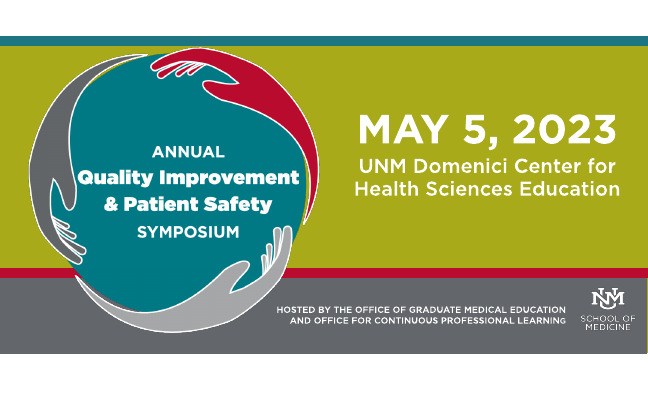Document Type
Presentation
Publication Date
3-6-2020
Abstract
Background:Our institution’s rate of hospital acquired Clostridioides difficile (C. diff) infection (CDI) is higher than expected based on documented severity of illness of our patients. The C. diff testing algorithm at our institution utilizes a multi-step approach. It begins with two tests (antigen EIA and toxin A/B EIA). If the results of these two tests are indeterminate, the algorithm then reflexes to a third test (NAAT-PCR). Non-toxin producing C. diff colonization can result in a positive C. diff test in the absence of active infection. 1, 2 Up to 20% of hospitalized patients are asymptomatic carriers of C. diff. 3 Diagnostic stewardship interventions have been shown to reduce the rate of CDI. 4
Purpose:We employed a multipronged approach to reducing CDI rates in our hospital. This included efforts in antibiotic stewardship, diagnostic stewardship, and infection control. We aimed to employ diagnostic stewardship interventions to reduce the number of inpatient C. diff tests ordered at a tertiary academic medical center in the Southwest United States.
Description:In this quality improvement project there were two interventions. The first intervention was a clinical decision-aid tool (“pilot”) that providers and nursing staff on selected units used prior to ordering a C. diff test. This tool recommended testing only if the following criteria were met: 1) the presence of 3 loose stools in the last 24 hours, 2) signs or symptoms associated with CDI (i.e. leukocytosis, abdominal pain, or cramping), 3) the absence of laxative administration within the last 48 hours, and 4) the absence of a processed C. diff test within the last 7 days. This tool only provided a recommendation and did not preclude testing if the provider disagreed with its recommendation. Providers and nurses were educated about the tool. Nursing was asked to complete the tool prior to sending specimen samples for testing.
In the second intervention, a hospital wide hard-stop within the electronic medical record was instituted. Providers ordering inpatient C. diff were blocked from placing the order if at least one of two restrictions were present. The first restriction was laxative administration within the last 24 hours. The second restriction was if a C. diff test had already been processed within the last 7 days. If a provider had a high clinic suspicion for CDI, they could bypass the hard stop by paging pathology and discussing the case. The quality measure assessed before and after these interventions was number of C. diff tests ordered. CDI rates were also tracked as an institution.
Prior to these interventions, 22.3 C. diff tests were ordered weekly across all inpatient services. After the pilot intervention was instituted the weekly average dropped to 18.4. After both interventions were instituted, the weekly average dropped to 15.6 C. diff tests ordered.
Conclusion:Diagnostic stewardship interventions, such as EMR hard-stops and clinical nursing decision aids, may be effective at reducing the number of inpatient C. diff tests ordered. Early data at our institution support that this is contributing to reduction in rates of CDI in our institution.
References
1. Madden, Gregory R., et al. “Diagnostic Stewardship and the 2017 Update of the IDSA-SHEA Clinical Practice Guidelines for Clostridium Difficile Infection.” Diagnosis, vol. 5, no. 3, 2018, pp. 119–125., doi:10.1515/dx-2018-0012.
2. Solomon, D. A., and D. A. Milner. “ID Learning Unit: Understanding and Interpreting Testing for Clostridium Difficile.” Open Forum Infectious Diseases, vol. 1, no. 1, 2014, doi:10.1093/ofid/ofu007.
3. Mcfarland, Lynne V., et al. “Nosocomial Acquisition OfClostridium DifficileInfection.” New England Journal of Medicine, vol. 320, no. 4, 1989, pp. 204–210., doi:10.1056/nejm198901263200402.
4. Schultz, Katherine, et al. “Preventable Patient Harm: a Multidisciplinary, Bundled Approach to Reducing Clostridium Difficile Infections While Using a Glutamate Dehydrogenase/Toxin Immunochromatographic Assay/Nucleic Acid Amplification Test Diagnostic Algorithm.” Journal of Clinical Microbiology, vol. 56, no. 9, 2018, doi:10.1128/jcm.00625-18.
Recommended Citation
Yeager, Luke A. and M E. Lacy. "Diagnostic Stewardship Interventions For Clostridioides Diffcile Infection." (2020). https://digitalrepository.unm.edu/hsc_qips/26


Comments
Presented at the University of New Mexico Health Science 2020 Annual Quality Improvement and Patient Safety Symposium.
This presentation was awarded "Health System Quality Initiative Award".